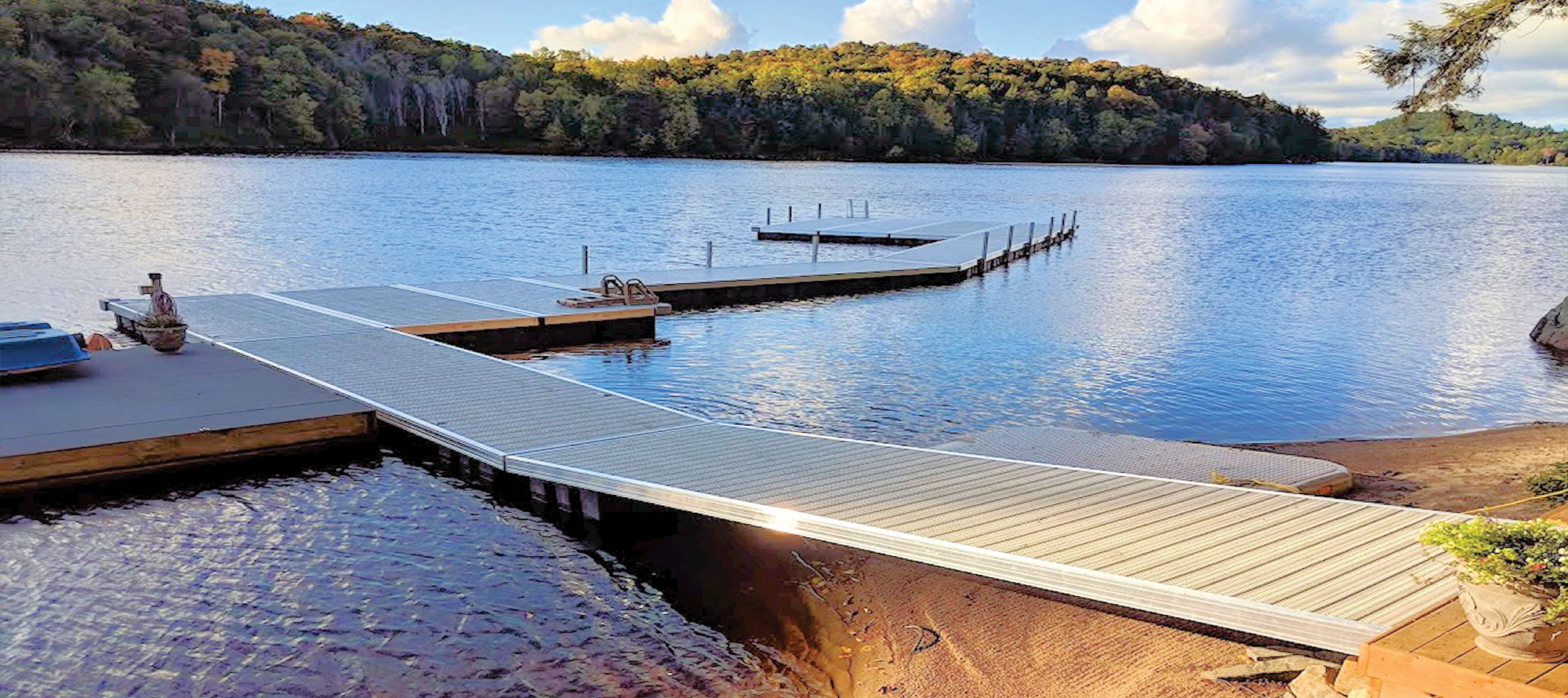Upgrade Your Beachfront With Sturdy Floating Docks
Upgrading your waterside with sturdy floating docks can dramatically boost both performance and appearances, supplying a flexible solution for different water tasks. With a variety of products offered, consisting of low-maintenance choices and typical timber, selecting the ideal dock can match your individual design and fulfill practical demands.
Advantages of Floating Docks
Floating docks deal a multitude of advantages that improve their allure for various maritime applications. Unlike traditional set docks, floating docks surge and loss with the tide, guaranteeing consistent availability for watercrafts and boat no matter of ecological problems.
Additionally, floating docks are simpler to transfer and install, providing versatility for seasonal or temporary use. Their modular style allows for personalization to fit certain requirements, whether for exclusive marinas, residential waterfronts, or business applications.
Furthermore, floating docks create very little disturbance to the aquatic setting, maintaining regional communities and minimizing the chance of disintegration. They also provide enhanced safety and security for customers, as their resilient nature supplies an extra flexible surface area than stiff structures.
Moreover, floating docks can promote a diverse series of tasks, such as angling, swimming, and leisure boating, making them a beneficial asset for waterside advancement. Their convenience and functionality make floating docks a preferred selection for a selection of naval jobs.
Selecting the Right Materials
Picking proper materials for floating docks is crucial to their durability, efficiency, and total efficiency. When picking materials, consider factors such as environmental exposure, maintenance requirements, and architectural integrity. Typical materials consist of wood, plastic, aluminum, and composite options, each offering distinct benefits and drawbacks.
Timber, while aesthetically pleasing, needs regular maintenance to avoid rot and decay. Pressure-treated wood can boost toughness, yet it might still catch water damages over time. Plastic floats, typically made from high-density polyethylene, are resistant to deterioration and call for very little maintenance, making them an eye-catching selection for low-maintenance applications.
Light weight aluminum is another viable alternative, recognized for its strength and lightweight buildings. It is resistant to rust and can hold up against extreme weather, although it may be extra pricey than various other materials. Compound products incorporate the most effective attributes of wood and plastic, offering a low-maintenance and resilient alternative that simulates the look of timber without the associated disadvantages.
Eventually, the option of material need to align with the intended usage, environmental considerations, and budget plan restrictions, making certain a functional and sturdy floating dock that fulfills your particular requirements.
Setup Process Review
The effective installation of a drifting dock depends on careful planning and implementation, guaranteeing that it operates successfully in its desired setting. The initial step involves evaluating website problems, including water deepness, coastline features, and prevailing weather condition patterns, which will certainly notify the dock layout and anchoring system.
Complying with the website analysis, the next phase is to prepare the floating dock elements. This consists of setting up the structure, safeguarding floats, and connecting any needed hardware. It is crucial to make sure that all links are water-resistant and robust to stand up to aquatic conditions.
When the dock is set up, the installation procedure begins with placing the dock in the water. This can include a crane or other lifting equipment, specifically for larger structures. Proper positioning is vital for performance and safety.

Maintenance Tips for Longevity
Routine upkeep is essential for ensuring the durability and optimum performance of a floating dock. To attain this, begin with regular inspections at the very least twice a year, concentrating on the honesty of the dock's framework, consisting of the flotation protection tools and linking equipment. Try to find indicators of rust, wear, or damage, and resolve any kind of problems without delay to avoid further degeneration.
Cleansing is an additional essential facet of upkeep. Eliminate particles, algae, and barnacles from the dock's see this surface area to avoid unsafe conditions and maintain aesthetic allure. Utilize a moderate cleaning agent and a soft brush to stay clear of harming the dock's products.
Furthermore, make certain that the dock is effectively secured and secured to hold up against seasonal modifications in water degrees and weather. Inspect the anchoring system for security and make modifications as essential.
Enhancing Your Exterior Visual
To create a visually enticing outside room, incorporating a drifting dock can dramatically boost the overall aesthetic of your waterfront residential or commercial property. Floating docks are not just useful but can additionally offer as a striking focal point that enhances the natural environments - floating docks. Available in numerous materials and layouts, these docks can be tailored to match your property's building style and landscape
The enhancement of attractive components, such as integrated illumination or elegant barriers, even more elevates the dock's aesthetic allure. Take into consideration utilizing all-natural timber coatings, which mix effortlessly with the atmosphere, or choosing contemporary materials like light weight aluminum or composite outdoor decking that offer check here a streamlined, contemporary look.
Tactically putting planters or seating areas on or around the dock this content can produce welcoming spaces that motivate leisure and satisfaction of beachfront sights. In addition, including colors and appearances that integrate with your landscape will develop a cohesive visual throughout your outside location.

Verdict

Upgrading your beachfront with sturdy floating docks can substantially boost both functionality and visual appeals, providing a flexible option for various water tasks. Unlike standard fixed docks, floating docks surge and fall with the trend, guaranteeing regular access for watercrafts and boat regardless of environmental problems.Choosing proper products for floating docks is crucial to their long life, performance, and total efficiency.When the dock is put together, the installation procedure begins with placing the dock in the water.In summary, floating docks deal various advantages, consisting of adaptability to water degree adjustments and a variety of product alternatives.